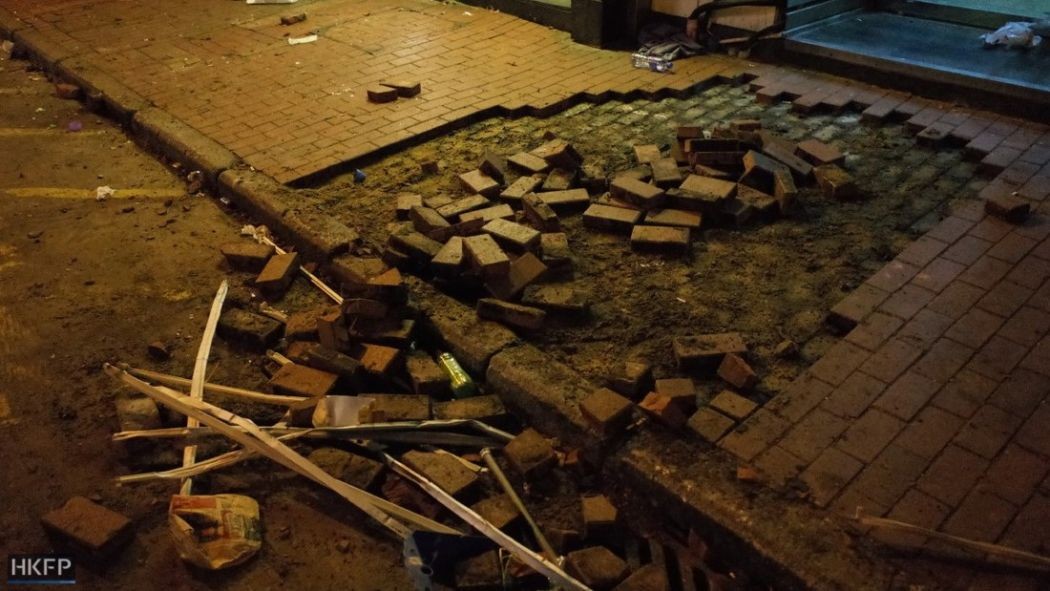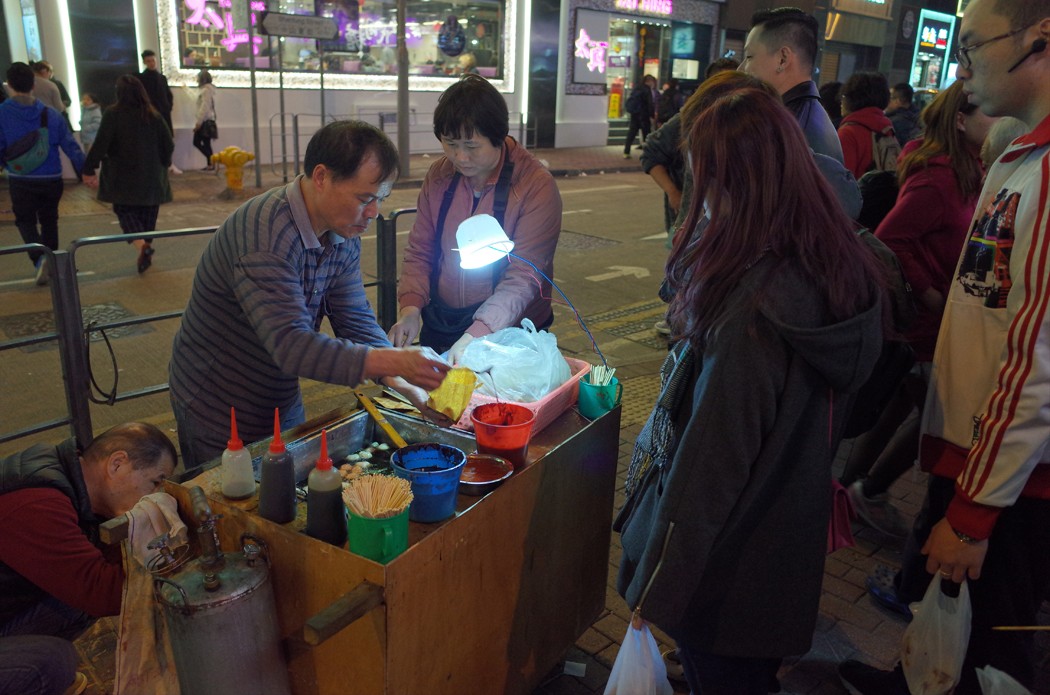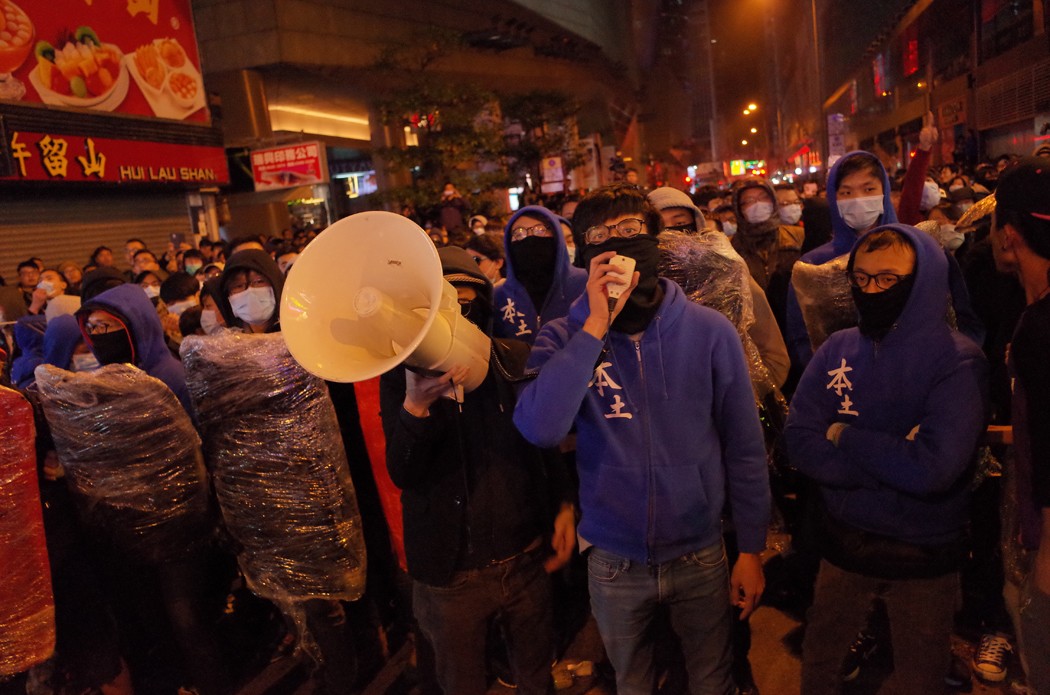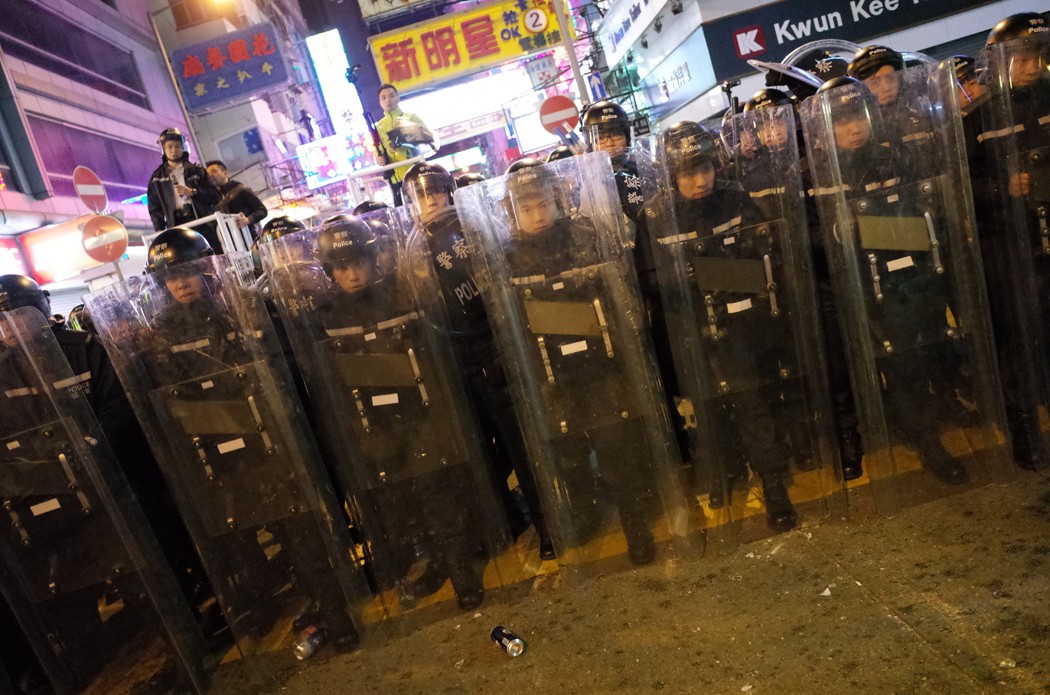Throwing bricks at people is dangerous, illegal and wrong. This is a proper first reaction to the Fishball Riot. The scenes on television were disturbing and distressing. Strong feelings are understandable.
In due course, however, we need to move on from strong feelings to rational consideration of why these terrible things happen. A lot of people seem to be in no hurry to get on to this. There has been much creative use of language to describe the rioters: animals, louts, savages, barbarians, “lumpen-proletariat” (in an up-market variation supplied to readers of the Business Post), “separatists” (for fellow-travellers), and in what the South China Morning Post hilariously described as a “searing indictment”, terrorists – at least, according to the Chinese Foreign Ministry.

Looking for causes is not the same thing as exonerating the rioters. But if we want to avoid a recurrence of such things in future we need to do better than the George W Bush level of analysis, which stops with a sigh of satisfaction at something along the lines of “they hate us because we’re good and they do it because they are evil.” We also need to do better than planning to ratchet up the level of force: more pepper spray, more tear gas, water cannons, rubber bullets, bean bags, live ammunition … I do not want to put ideas into people’s heads but there are more extreme things rioters can do than throwing bricks, and more violent responses will trigger mutual escalation.
We may well suspect – though as a number of cases are now going through the courts it would be a nice concession to the rule of law if we refrained from saying so too often – that some people in Hong Kong would like a riot, or at least are happy to behave in a way which risks starting one. That may be a necessary condition for having a riot, but it cannot be a sufficient one. Most of the time Mong Kok is as tranquil as the rest of Hong Kong. If your previously tranquil family pet bites someone you will want to know why, not because you wish to exonerate it or suggest that biting people is OK, but because you want to avoid it happening again and understanding must precede prevention.

Any large event involving lots of people must have multiple causes. Identifying the spark is important, but we also need to know why the situation was explosive. Here I explore, in no particular order, features of the situation which helped to make it inflammable.
Mong Kok is an interesting and colourful part of Hong Kong with more of a distinctive identity than many others. Its young people, in particular, are referred to as “MK” boys and girls. No doubt much of the difference is illusory. Mong Kok also has another oddity: it has no district board. There used to be a Mong Kok District Board. The government did not like the people who were elected to it. So the Mong Kok DB was merged with two others to form a constitutional monstrosity called Yau Tsim Mong. I do not suggest that the population of Mong Kok has been seething with suppressed fury over this ever since. But the spending of public money tends to follow boundaries. We may be sceptical about the effects of “community-building” efforts in grubby suburbs like Wong Tai Sin or Sham Shui Po, but at least they are attempted. In Mong Kok they are not.
The Food and Environmental Hygiene Department is a recurring problem. Public hygiene used to be a matter for the Urban and Regional Councils so the department was supplied with a reasonably coherent account of what the public wanted and expected from it. Although – or rather because – they were elected democratically, both the councils were abolished soon after the handover. Departments were then left to get their feedback from the District Councils, which are of course numerous, cover very different areas, and in any case these days spend most of their time funneling public money to Left-wing organisations. This means that the FEHD is left without much guidance. The Leisure and Cultural Services lot have a similar problem, but people don’t in general feel strongly about culture. They do feel strongly about the FEHD because one of the roles which it has selected for itself is to suppress any attempt to sell or serve food in the street. As a result the department’s minions are widely hated, even by respectable members of the middle classes. A lot of people who are not interested in politics in general or localism in particular would have no hesitation in joining a defence of fishball hawkers against the FEHD.

The New Year “amnesty” is another issue of relevance here. A variety of laws have traditionally been, in effect, suspended over the Chinese New Year period. The most obvious example is parking. People are not ticketed if they park in normally illegal places outside estates while doing their regulation visits. It’s a sensible concession.
The decision to disturb an arrangement of this kind should not be taken lightly. It may be resented. In the 80s there were annual stories at this time of the year of police raids on illegal seasonal gambling events in New Territories villages. The villagers often responded violently and sometimes the raiding party had to be rescued by the Riot Squad. In the 90s there was much bitterness when traffic wardens decided that the usual amnesty did not apply to roads in the vicinity of the Che Kung Temple. This presented a particular problem for drivers because the temple’s own large car park was commandeered by the police for their own exclusive use. Later there was controversy when the then police chief in Fanling announced that the traditional blind eye to seasonal fireworks would no longer be turned on his patch.
No doubt some changes in these matters are necessary and desirable, but apparently street fishballs were offered this year without problems in other districts. Some sleeping dogs are better undisturbed.
The Occupy movement in Mong Kok adds another twist to this story. Characterising the Fishball Riot as Occupy 2.0 was a piece of mischievous deception. But it draws attention to an important piece of history. Mong Kok was never part of the plans for Occupy Central. No preparations were made and nobody was trained. The occupation of Mong Kok was a spontaneous reaction to the Teargas Festival. It was not particularly based on non-violence as a matter of principle, and the opposition to it was not non-violent either. In Mong Kok occupiers were often abused and beaten by civilian vigilantes who, although they looked like the sort of people the government did not want on the District Board, seemed to be on surprisingly good terms with the police. When the occupiers of Central politely folded up their tents and returned to their studies, the occupiers of Mong Kok simply switched tactics. There were regular “shopping” events in which protesters temporarily occupied some spaces. Counter-demonstrators appeared and there were regular scuffles. Some of the people who had been politicized by their experience in Mong Kok went on to other protests.

The way demonstrations are handled produces an impact on subsequent events. I do not think anyone who follows this topic objectively would dispute that the police approach to protests became a good deal more brusque during the period when the management’s response to any incident, no matter how untoward, was that “our boys can do no wrong”. The use of chemicals became less nuanced and more common, followed by the incidence of other forms of violence. Someone complained last week that the people who turned up in Mong Kok were “prepared to riot” because they had masks, helmets and body armour. This is a totally unwarranted inference. People who go to protests these days expect that they will sooner or later, however pacific their intentions, be pepper-sprayed or beaten or both. They dress accordingly.
I fear that far more people are being radicalized by experiences of this kind than by localist or other controversial propaganda. Their personal experience of the law enforcement machinery is not pretty, and the aftermath is not pretty either. No doubt most public order offences are dealt with by the courts in an entirely impartial and non-political way. But it is the outlying cases, the extreme ones, which people remember. The outlying cases comprise, say, the lady who was jailed (jailed!) for assaulting a cop with her bosom, and the Superintendent whose flailing at passers-by with his official tickling stick produced no criminal proceedings at all. It is perhaps a pity, under the circumstances, that a spokesman for the police union publicly advanced the view last week that for police to throw bricks at rioters was a legitimate form of self-defence.
The legitimacy of the regime is of crucial importance. In the immediate aftermath of the handover in 1997 it appeared that the Hong Kong Government, though it was not chosen by Hong Kong people, was nevertheless at least a genuine government, not a mere conduit for instructions from elsewhere. This illusion (or if you prefer, this reality) has become increasingly hard to sustain over the years.
In concentration camps they economise on guard manpower by having people who are known in German as kapos. They are prisoners, but in return for extra food and other benefits they perform all the internal management of the camp. All the real guards have to do is police the boundary and count the inmates occasionally. If you are an inmate your kapo is a person of enormous consequence. He can make your life easy or intolerable. At the same time he is not a person you respect. He has made a corrupt and selfish bargain with the authorities, who concede no important powers in return. He cannot change the rules, the policies or the circumstances. He is himself, in the end, still a prisoner.
I am afraid that repeated demonstrations of the impotence of our leaders, culminating in the kidnapping of the booksellers and the spineless response to it, have eroded the public view of the people in power in a way which they do not yet realize. We see the suits, the thrones, the chauffeur-driven cars and the bauhinias in various colours. We hear the speeches, the promises, the declarations of important principles and essential values. We should be seeing pillars of the community. But in the end what we are looking at is a bunch of kapos.

Of course in a Mong Kok context this is rather ethereal stuff. The moment when Lufsig finally lost the district was probably when he refused to support the Hong Kong football team if it was playing China.
Finally, we arrive at the events on the night. An “incident” which lasts for 10 hours cannot just be regarded as the inevitable consequence of one event or one person. It is a dialogue or a contest between the forces of disorder and the forces of order. Rioters are responsible for riots. But policemen are responsible for suppressing riots and if the riot lasts well into the next morning we are entitled to wonder if some better move might have concluded the matter earlier.
This is a tricky area. We do not know exactly what happened and we probably are not going to be told either. The inquiry, if any, will be internal. It is dangerous to jump to any conclusions from watching video clips, though that doesn’t seem to have stopped a good many people. The clips come in three categories.
The ones which I presume are earliest show a small group of traffic cops, clearly neither dressed nor trained for riot control, surrounded by a hostile crowd. The effect is rather like those colonial military catastrophes in which a British battalion finds itself suddenly surrounded by a horde of angry locals. The traditional remedy is to form a square, but you can’t really do that if there are only a few of you. The forces of order conduct a dignified retreat until one of them appears to trip over a piece of debris and fall. He then becomes the main target. Ambrose Lee thought this was particularly deplorable but it is what usually happens. Winston Churchill noticed the same thing at the Battle of Omdurman. One of the traffic people then fires two shots into the air. Well what comes up must come down, but in the circumstances this seemed a reasonable thing to do. It was more disturbing to see the same gentleman pointing his gun at the crowd afterwards. One of the few items of gun lore I managed to extract from my father (ex-SAS but shy about it) is that you should not point a firearm at anyone unless you want to kill them. I am a bit surprised that this rather basic point is apparently not mentioned in the police manual on the subject. Still in a hairy moment we all get excited. The only thing you have to ask about this part of the proceedings is why a small group of traffic policemen were there in the first place. Given the history of public order in Mong Kok this would hardly be a sensible response to a report of brawls over fishball stalls.
The second set of videos has a larger body of policemen retreating under a hail of missiles. This seems an unfortunate compromise, because it means the people throwing missiles are constantly advancing onto territory strewn with the stuff they have already thrown once, which they can now throw again. No doubt there are reasons, doctrinal or practical, why neither a static defence nor a rapid retreat was acceptable.

Later, I presume, we get the full gear riot squad in action. Apparently this came rather late in the proceedings. According to one report when they were finally called in there was a long delay while they went to Fanling to collect their kit. I suspect someone will eventually conclude, with impeccable hindsight, that there was a failure somewhere to comprehend the seriousness of what was going on. Perhaps in the longer run someone may also conclude that the idea of having crowd control based in Fanling is obsolete. Given the technology available to the man in the street these days it means the crowd can gather a lot quicker than the controllers.
And so… What can we conclude from all this? On the night, we were unlucky. Some small differences in the geography or the timing and the whole night might have passed peacefully. On the other hand those people who claim to be completely surprised have not been paying attention. People have warned regularly of rising levels of frustration, alienation and violence in public places ever since Occupy ground to its fruitless conclusion.
Public figures and commentators who have got their horror and disapproval off their chests need to turn to some more constructive cogitation. Riots do not come out of nowhere and ordinary citizens do not turn into rioters out of some spontaneous degeneration of the conscience. Something is wrong with the relationship between government and people. Fix it.
